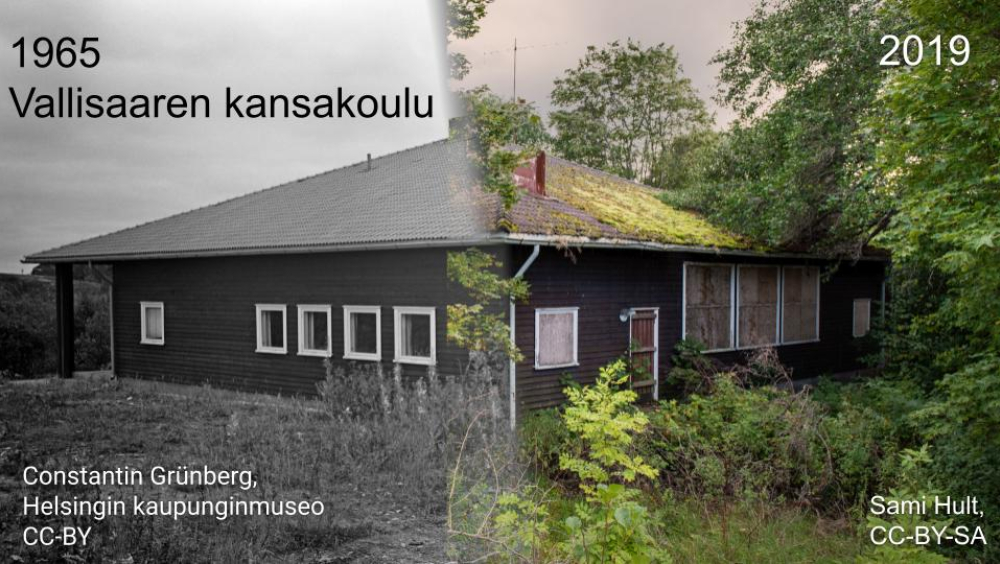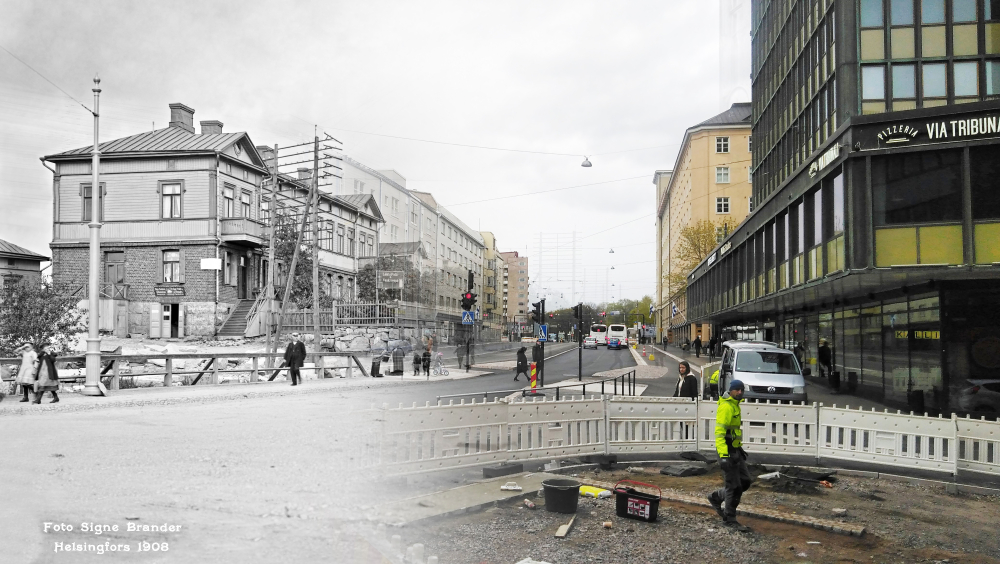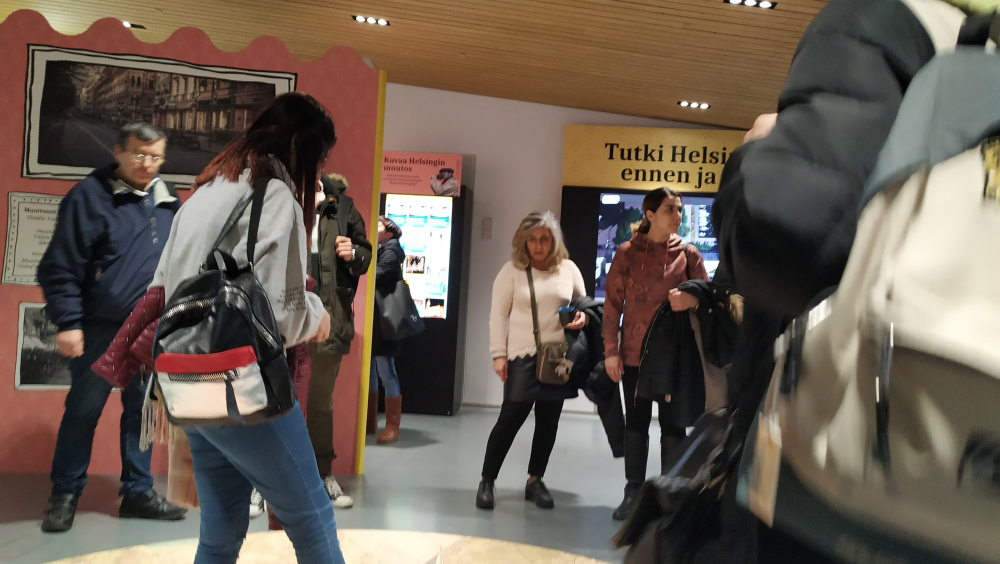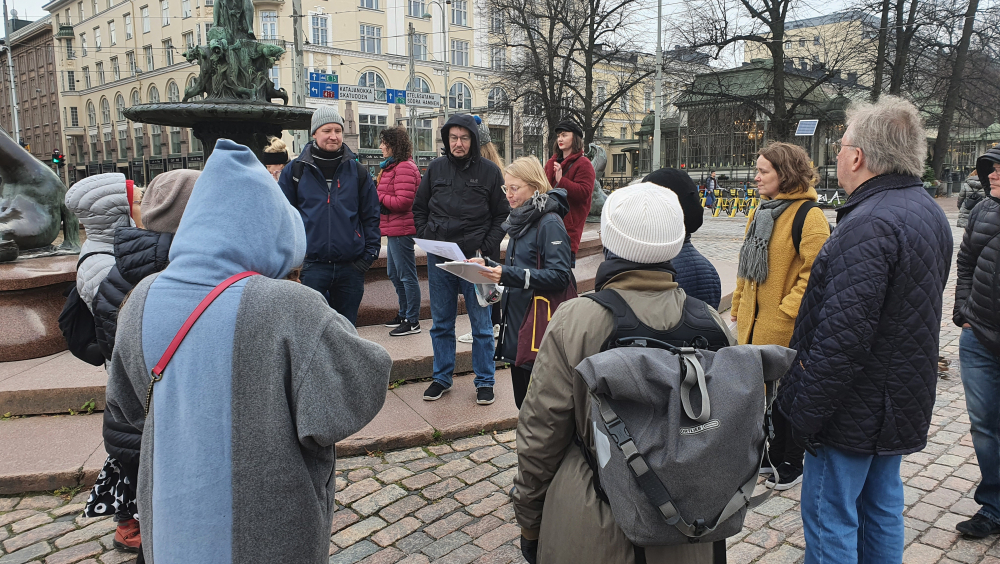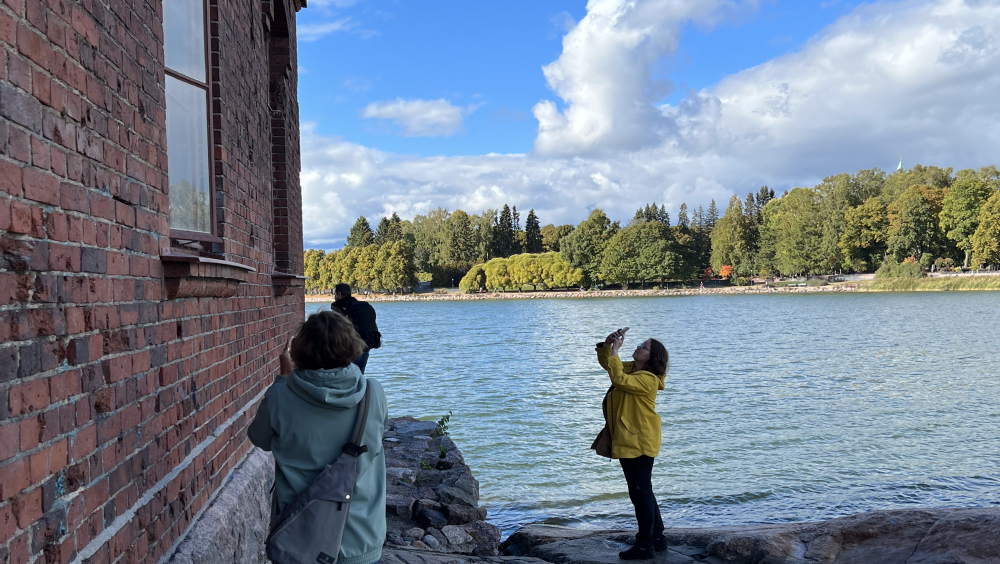Helsinki rephotography
Wikimedia Finland has worked with the Estonian rephotography site Ajapaik to document the change in Helsinki. In 2018 we organized guided photowalks and re-photography to capture the city's transformation.
In the process, we found that we were deeply fascinated by cultural heritage sites undergoing significant changes. Our first rephotography tour took us to Vallisaari, a former closed military island with fortifications dating back to the 1800s. The island was opened as a public park in 2016; since then, we have visited almost annually to observe the changes there. We witnessed its transformation from an abandoned place reclaimed by nature to a public space, including being the venue of the Helsinki Biennale in 2021 and 2023.
Another that has affected us was the dedication of people to their heritage. The Lapinlahti Mental Hospital area was designed in 1830 by C.L. Engel, one of Finland's most notable architects. After the hospital was closed in 2008, mental health activists from Lapinlahden Lähde have worked to keep the area from being sold to private companies, so that the area could remain open for all. Together with them, we organized photowalks in 2020 and 2022, where former employees shared their memories and stories of the hospital and its current use. We also participated in an event where children of former employees who lived in the closed hospital area showed photos from their family albums and told stories about their childhood. In addition to rephotography, we documented the place using regular cameras and drones.
We feel that we are documenting the events and places whose position in time is unique, as is the change to any direction so big that it makes the place look completely different.
Between 2018 and 2022, Wikimedia Finland, the support association of Finnish Wikipedists, did a project to explore, document and rephotograph Helsinki city. The project was done together with the Estonian Photographic Heritage Society (MTÜ Eesti Fotopärand) and its digital platform Ajapaik.
The main incentive behind the project was to develop methods for combining online and offline participation. We wanted to create activities that encourage physical activity by exploring cultural heritage at outdoors instead of sitting in front of the computer. As a result, we wanted to gather good-quality photos of notable historical places to be used in Wikimedia projects. For the long term, we developed methods for on-site information crowdsourcing for Wikimedia projects.
So, we focused on rephotographing, reproducing the locations shown in old photographs as accurately as possible while improving the metadata associated with old and new photographs. To achieve this together with Ajapaik we developed a mobile application that facilitated rephotographing and organized photography tours.
To develop the software, Ajapaik organized a code camp retreat in the Estonian countryside. The app allowed users to align their phone's camera with historical photos to confirm the place and automatically collected the metadata. The most important information collected was location data, but we also developed methods for classifying images.
Interesting historical photographs were curated in advance from open archives and located approximately during the photography tours. On-site, photographers then used the mobile application to browse nearby historical photographs and find the more accurate location. We also had a local knowledge guide on tours, who could tell us about the area's history. The guide also allowed the group to access places that would otherwise have been inaccessible. We also actively used the events to get feedback from users to refine the user experience. Participants were also encouraged to take photographs independently.
Places where we visited were cultural heritage sites under a change. For example in 2020, we visited the Helsinki-Malmi Airport, built in 1936 and listed as one of Europe's most endangered cultural heritage sites. It was a place with unique architecture and a combination of knowledge, organizations, and connections between people gathered there over the past 85 years. We had the pleasure of being guided by an electric airplane pioneer. We captured images of the area while it was still an active airfield. In 2021 Helsinki City closed the airport to build a residential area.
During our visits, we had some memorable encounters too. In one of our rephotowalks in Tamminiemi, the former residence of the president of Finland, one of the participants was President Urho Kekkonen's granddaughter, who visited and lived in Tamminiemi. For example, she told stories about their birthday parties in Tamminiemi when they were children, and the president Kekkonen visited them. She had first-hand stories about the place and photos from her private photo collection.
We also encountered surprises. In 2022, we organized a guided tour of the Helsinki Workers' House Tower building, where we planned to replicate historical photos taken from an aerial perspective. Our guide, a Workers Houses employee, informed us that the building was one of the proposed buildings for inclusion in the UNESCO World Heritage List due to its notable and well-preserved worker houses. A little bit later, we also learned that the Worker's Museums inventory project was updating information about Finnish Workers' houses on Wikipedia.
Over three years, the project produced 2,700 rephotography pairs from Helsinki and added location information to 6,200 old photographs. The majority of users utilized the platform to browse nearby historical photographs from museums. The project also organized two exhibitions, one in Helsinki and one in Tallinn, where participants could also add metadata to the pictures. Three thesis works on software development were completed by higher education students for the project.
Helsinki rephotography collected metadata and rephotographs for openly licensed photographs to overcome language barriers, making historical images internationally searchable. At the same time, we searched for information and documented heritage sites. We used collected information, photos, and metadata on Wikimedia projects, most notably in Wikipedia, where it is available for all.
Events by Helsinki rephoto were free to attend to ensure everyone could join without financial barriers. The majority of our participants were seniors, and over half were women. We were encouraged by the strong female participation, which aligned with our goal to improve gender balance on Wikipedia.
We spotlighted historical photographers such as Signe Brander and Ivan Timiriasev and historical events and locations like Suomenlinna, Vallisaari, Graf Zeppelin's visit in 1930, and the 1952 Helsinki Summer Olympics buildings through photography, integrating these narratives into specific places and Wikipedia. We would like to think that with rephotography, we were able to present historical events in a way that allowed the public to participate in creating a common heritage.
The project's activities have also spread beyond Helsinki. Photographs from Pori, Turku, and Tampere were included in Ajapaik and Kuvaa Uusiksi, a rephotography project that engaged photographers in Uusimaa through photography walks. We also networked with the Hungarian historical photograph site Fortepan. In Estonia, Ajapaik's volunteers received Volunteers of the year award from the president of Estonia for their long-time work with Estonian photos.
